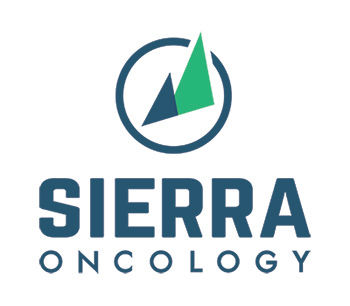预约演示
更新于:2025-05-07
BET x BRD4
更新于:2025-05-07
关联
247
项与 BET x BRD4 相关的药物靶点 |
作用机制 BRD4抑制剂 [+1] |
在研机构 |
最高研发阶段临床3期 |
首次获批国家/地区- |
首次获批日期1800-01-20 |
靶点 |
作用机制 BRD4抑制剂 |
在研机构 |
原研机构 |
非在研适应症 |
最高研发阶段临床2期 |
首次获批国家/地区- |
首次获批日期1800-01-20 |
靶点 |
作用机制 BRD4抑制剂 |
原研机构 |
在研适应症 |
最高研发阶段临床1/2期 |
首次获批国家/地区- |
首次获批日期1800-01-20 |
53
项与 BET x BRD4 相关的临床试验NCT06590324
A Phase II, Multi-centre Open Label Study to Assess the Efficacy and Safety of Oral Apabetalone With Background Dapagliflozin in Subjects With Long -COVID-19 (Post-COVID-19 Conditions) and Type 2 Diabetes Mellitus (T2DM)
This is an open label, multicentre, phase II clinical trial that aims to assess the efficacy and safety of oral Apabetalone with background dapagliflozin for up to 12 weeks in T2DM patients with a history of probable or confirmed SARS-CoV-2 infection, with symptoms within 3 months from the onset of COVID-19 that last for at least 2 months and cannot be explained by an alternative diagnosis.
开始日期2025-04-15 |
申办/合作机构 |
NCT03160430
A Two-Part Phase 2a Study in Patients With End-Stage Renal Disease Treated With Hemodialysis; Part A is an Open-Label Study Arm to Evaluate the Effect of Hemodialysis on the Pharmacokinetics of 100 mg RVX000222; and Part B is a Double-Blind, Randomized, Placebo-Controlled, Sequential Cross-Over Study Arm to Evaluate the Efficacy, Safety, and Pharmacokinetics of RVX000222
This is a multi-center, two-part study; Part A and Part B. Part A of the study is an open-label, single-dose pharmacokinetic (PK) evaluation of 100 mg RVX000222 on dialysis and non-dialysis days in eight (8) End Stage Renal Disease (ESRD) patients who receive hemodialysis as standard of care.
Part B of the study is a double-blind, placebo-controlled study in up to thirty six (36) ESRD patients receiving hemodialysis using a sequential cross-over design with RVX000222 at a daily oral dose of 100 mg b.i.d. (200 mg per day) or matching placebo in combination with SoC.
The primary objective of the study is to evaluate if treatment with RVX000222 in combination with standard of care (SoC) decreases plasma alkaline phosphatase in comparison to placebo and SoC.
Part B of the study is a double-blind, placebo-controlled study in up to thirty six (36) ESRD patients receiving hemodialysis using a sequential cross-over design with RVX000222 at a daily oral dose of 100 mg b.i.d. (200 mg per day) or matching placebo in combination with SoC.
The primary objective of the study is to evaluate if treatment with RVX000222 in combination with standard of care (SoC) decreases plasma alkaline phosphatase in comparison to placebo and SoC.
开始日期2024-11-22 |
申办/合作机构 |
CTR20233943
一项评价蛋白质降解剂注射用RNK05047在晚期实体瘤和淋巴瘤受试者中的安全性、耐受性、药代动力学、药效学和疗效的开放、多中心的Ⅰ期临床试验
确定RNK05047在晚期实体瘤和淋巴瘤患者中的2期临床推荐剂量(RP2D),评价RNK05047在晚期实体瘤和淋巴瘤患者中的安全性和耐受性。评价RNK05047的药代动力学(PK)特征,抗肿瘤活性的初步证据。探索安全性和/或疗效终点与PK/PD的关系。评估与RNK05047相关的生物标志物,探索生物标志物的变化和治疗结果的关系。
开始日期2024-02-19 |
申办/合作机构 |
100 项与 BET x BRD4 相关的临床结果
登录后查看更多信息
100 项与 BET x BRD4 相关的转化医学
登录后查看更多信息
0 项与 BET x BRD4 相关的专利(医药)
登录后查看更多信息
2,752
项与 BET x BRD4 相关的文献(医药)2025-08-01·Tissue and Cell
Inhibition of BRD4 alleviates pyroptosis induced by testicular ischemia/reperfusion injury through the NLRP3 pathway
Article
作者: Li, Haoyong ; Wang, Jinrun ; Zhou, Zhiyan ; Ning, Jinzhuo
2025-07-01·European Journal of Pharmacology
Synergistic effects of BET inhibitors and ferroptosis inducers via targeted inhibition of the BRD4/c-Myc/NRF2 pathway in AML
Article
作者: Qiu, Kangjie ; Liu, Xin ; Dai, Zhangshuai ; Chen, Cunte ; Li, Yangqiu ; Zhong, Mengjun ; Zeng, Chengwu ; Zhong, Shuxin ; Peng, Xueting ; Yu, Zhi ; Sui, Songnan ; Nie, Dingrui ; Wang, Xianfeng ; Yu, Quan
2025-06-01·Veterinary Microbiology
Transcriptome profiling reveals that the host BRD4 protein facilitates African swine fever virus infection and suppresses inflammatory cytokine expression by downregulating transcriptional regulatory signaling pathways
Article
作者: Yang, Jifei ; Hao, Rongzeng ; Tian, Zhancheng ; Guan, Guiquan ; Sun, Hualin ; Zhang, Zhonghui ; Luo, Jianxun ; Yin, Hong ; Niu, Qingli ; Wu, Mengli
210
项与 BET x BRD4 相关的新闻(医药)2025-05-05
·生物谷
研究表明,BRDT或许是独立于BRD4的治疗靶点。与BRD4相比,BRDT在肺癌中的表达更具特异性,这意味着它可能成为一个理想的治疗靶点。
在医学界,肺癌无疑是一场旷日持久的硬仗,尤其是小细胞肺癌(SCLC),其惊人的增殖和扩散速度让无数患者和医生陷入困境。尽管手术、化疗和放疗等传统手段在一定程度上能压制病魔,但肺癌的高复发率和耐药性如同幽灵般如影随形,许多患者最终难逃治疗失败的厄运。
然而,科学的车轮从未停止转动。随着基因组学和分子生物学的飞速发展,科学家们逐渐挖掘出肺癌背后的分子秘密。其中,一个名为BRDT的睾丸特异性蛋白,因其在肺癌中的 “越界” 表达,引起了研究人员的高度关注。这个原本这就像在平静的湖面下发现了一股暗流,暗示着BRDT在肺癌发展中扮演着重要角色。
BRDT蛋白的发现,源自科学家们对肺癌细胞分子机制的深入挖掘。研究人员发现,BRDT在多种癌症中异常表达,其中在肺癌中的表现尤为突出。在正常生理状态下,BRDT主要在睾丸中发挥功能,参与精子发生过程中的基因转录调控。可当它出现在肺癌细胞中时,却摇身一变,成为了促进肿瘤生长的 “幕后黑手”。
为了揭开BRDT在肺癌中的神秘面纱,美国西北大学医学院等机构的科学家们展开了一系列实验。他们首先分析了BRDT在不同肺癌细胞系中的表达水平,结果发现,与正常细胞相比,肺癌细胞中的BRDT表达量显著升高。这就像在平静的湖面下发现了一股暗流,暗示着BRDT在肺癌发展中扮演着重要角色。
接着,为了验证BRDT的作用,科学家们利用基因编辑技术,精准地开发出一系列能特异性敲低BRDT表达的肺癌细胞系。实验结果令人振奋:当BRDT被成功敲低后,肺癌细胞的增殖速度明显减缓,肿瘤生长也得到有效抑制。这就像切断了肿瘤的 “营养供应线”,让它们失去了肆意扩张的能力。
BRDT在肺癌中的异位表达
相似却又独特的 “兄弟”
在研究过程中,科学家们还发现BRDT与另一个名为BRD4的蛋白有着千丝万缕的联系。BRD4早已为人熟知,它是一种知名的癌蛋白,通过调节基因表达来推动肿瘤细胞的生长。BRDT和BRD4在某些方面功能相似,但BRDT还有一些独特的本领。例如,BRDT能够独立于其溴结构域释放暂停的RNA聚合酶II,直接促进基因表达。这种独特的功能表明,BRDT在肺癌中的作用机制更为复杂多样。
肺癌治疗的 “新希望”
BRDT的发现为肺癌治疗打开了一扇全新的大门。研究表明,BRDT或许是独立于BRD4的治疗靶点。与BRD4相比,BRDT在肺癌中的表达更具特异性,这意味着它可能成为一个理想的治疗靶点。通过精准靶向BRDT,科学家们有望开发出更精准、更有效的肺癌治疗方法,同时将对正常细胞的损害降到最低。
此外,研究人员还发现BRDT在肺癌中的表达水平与患者的预后息息相关。在某些肺癌亚型中,BRDT的高表达与患者的不良预后紧密相连,这进一步凸显了BRDT在肺癌发展中的关键地位。
BRDT的发现无疑为肺癌治疗带来了曙光,但我们也清楚地认识到,从实验室的发现到临床应用还有很长的路要走。未来的研究需要进一步验证BRDT在肺癌中的作用机制,并探索靶向BRDT治疗的安全性和有效性。同时,科学家们还需深入研究BRDT与其他肺癌相关分子之间的相互作用,以期开发出更全面、更有效的治疗方案。
尽管前路漫漫,但BRDT的发现无疑是迈向光明未来的重要一步。它不仅加深了我们对肺癌分子机制的理解,更为患者带来了新的希望。我们期待未来的研究能将这一发现转化为实际的治疗方法,为肺癌患者争取更多的生存机会,带来生命的转机。
在这个充满挑战的医学领域,每一次突破都可能成为拯救生命的钥匙。BRDT的故事还在继续,而我们,正站在一个充满希望的新起点上!(生物谷Bioon.com)
参考文献:
BIN ZHENG,MARTA IWANASZKO,SHIMAA HASSAN ABDELAZIZ SOLIMAN, et al. Ectopic expression of testis-specific transcription elongation factor in driving cancer, Science Advances (2025). DOI: 10.1126/sciadv.ads4200.
基因疗法
2025-04-30
买科研服务(代计算、代测试、超算机时),送老李校长“科研理工男士情感课”第一性原理计算解决50年悬而未决难题:半导体中铜为何扩散更快?Ab initio及第一性原理入门参考书介绍《海贼王》告诉你,做科研为什么不能闭门造车……985博导亲测:用DeepSeek写国自然本子,3天完成30天工作量来自公众号:小柯生命本文以传播知识为目的,如有侵权请后台联系我们,我们将在第一时间删除。北京时间2025年4月28日17时,天津医科大学董城联合石磊、陈东星、谢松波团队在《自然—结构与分子生物学》(Nature Structural & Molecular Biology)期刊在线发表了蛋白质靶向降解(TPD)领域的最新研究成果,题为“Design of PROTACs utilizing the E3 ligase GID4 for targeted protein degradation”。该研究首次将E3连接酶GID4应用于PROTAC分子设计。研究团队设计了基于GID4的PROTAC,实现了多个致病蛋白的靶向降解,并解析了GID4-PROTAC-BRD4三元复合物的晶体结构,系统阐明了GID4介导底物降解的分子机制。这一成果拓展了可用于TPD的E3连接酶工具箱,为未来精准药物研发开辟了新方向。靶向蛋白质降解(TPD)作为一种新兴的癌症治疗策略,受到广泛关注。PROTAC技术以其催化剂量起效、靶向“不可成药”蛋白的独特优势成为TPD领域的代表性技术。然而,目前已应用于PROTAC设计的E3连接酶主要限于CRBN、VHL等少数几种,开发新的E3连接酶成为该领域亟需解决的问题。天津医科大学董城教授课题组长期致力于E3连接酶底物识别机制的基础研究,系统解析了多个重要E3连接酶的底物识别规律,先后报道了E3连接酶GID4、ZYG11B、ZER1、FEM1C、TRIM7、Pirh2、ASB7等分子机制(Nat Chem Biol, 2018;2021;PNAS, 2020;2022;Mol Cell, 2021;Nat Commun, 2022;2023;2024),并在此基础上开发了ZYG11B核酸适配体靶向降解平台(Nat Commun, 2025)。研究人员基于GID4的深窄结合口袋特征,设计了高亲和力小肽PGLW,并联合辉瑞公司进一步开发了GID4特异性小分子配体PFI-7(Nat Chem Biol, 2024)。在本项研究中,作者以PFI-7和BRD4抑制剂JQ1为基础,成功设计出首个GID4-PROTAC先导分子NEP108,实现了BRD4的泛素-蛋白酶体依赖性降解。解析的GID4-NEP108-BRD4三元复合物结构为后续优化提供了重要线索。通过引入刚性哌嗪基团,团队进一步优化出新型降解剂NEP162,不仅增强了三元复合物稳定性,还显著提升了细胞降解效果。晶体结构分析显示,NEP162在三元复合物中存在“J型”与“L型”两种结合构象,揭示了PROTAC介导的三元复合物动态构象特征。a, 基于GID4的NEP162降解剂的化学结构; b, BLI测定GID4-NEP162-BRD4可形成三元复合物; c-d, GID4-NEP162-BRD4不同构象的三元复合物晶体结构在功能验证中,NEP162在细胞水平有效降解BRD4,并表现出抑制细胞增殖、诱导细胞凋亡的生物学活性。在小鼠肿瘤模型中,NEP162(15mg/kg,IP)显著抑制了肿瘤生长,同时显示出良好的体重和器官安全性。进一步研究发现,NEP162能够选择性降解BET家族中的BRD2和BRD4,而对BRD3无明显影响。此外,研究人员还将GID4-PROTAC技术应用于ERα和SMARCA2等其他致病蛋白,验证了其广泛的适用性和潜力。天津医科大学董城教授、石磊教授、陈东星教授和谢松波教授为本研究的共同通讯作者。天津医科大学博士生李艳冉、博士包凯文、博士生孙吉跃及山东师范大学博士葛瑞鑫为共同第一作者。该研究得到国家自然科学基金委、中组部以及免疫微环境与疾病教育部重点实验室、天津医科大学科研共享平台的支持。相关论文信息:https://doi-org.libproxy1.nus.edu.sg/10.1038/s41594-025-01537-1编辑 | 余 荷排版 | 王大雪
蛋白降解靶向嵌合体
2025-04-29
—各奖项申报陆续启动,欢迎关注—PROTAC通过招募E3泛素连接酶诱导目标蛋白的泛素化降解,为癌症治疗提供了新策略。然而,目前仅有少数E3连接酶(如CRBN、VHL)被成功应用于PROTAC开发,限制了其靶标范围。4月28日,天津医科大学董城、石磊、陈东星、谢松波团队合作,在Nature Structural & Molecular Biology杂志发表论文,首次将E3连接酶GID4(glucose-induced degradation deficient complex 4,葡萄糖诱导降解缺陷复合物4)应用于PROTAC分子设计。研究团队设计了基于GID4的PROTAC,实现了多个致病蛋白的靶向降解,并解析了GID4-PROTAC-BRD4三元复合物的晶体结构,系统阐明了GID4介导底物降解的分子机制。此外,他们据此开发出高效降解剂NEP162,成功实现BET家族蛋白BRD4的精准清除。研究人员先前已经开发出一种靶向GID4拮抗剂的PFI-7,于是他们假设PFI-7可作为E3连接酶的配体,应用在PROTAC分子中。于是他们将PFI-7与BRD4抑制剂JQ1连接,并通过改变连接链长度,设计了一系列PROTAC分子。通过细胞实验,研究人员发现PROTAC分子NEP108可以降解BRD4,而阴性对照则没有活性。这表明PFI-7可以有效地招募GID4,并促进BRD4的降解。图1. NEP108用于BRD4降解的设计和表征然后,研究人员解析了GID4-NEP108-BRD4三元复合物的晶体结构。其中NEP108分子夹在BRD4和GID4之间,JQ1和PFI-7部分分别与BRD4和GID4的结合位点结合。研究发现,BRD4的BC环和GID4的L3环相互作用,并形成氢键。这与之前报道的VHL基础PROTAC的作用机制有所不同。此外,连接链长度对PROTAC的活性有重要影响,较短的连接链会导致空间位阻,而较长的连接链则可能不利于三元复合物的形成。图2. GID4-NEP108-BRD4三元复合物的晶体结构接下来,研究人员在NEP108的基础上进行结构优化,设计了更有效的PROTAC分子NEP162。后续实验发现,NEP162可以更有效地降解BRD4,并具有更强的GID4结合亲和力。图3. NEP162对BRD4降解的设计和表征通过晶体结构解析,他们发现了GID4-PROTAC-BRD4三元复合物的动态结合模式:NEP162通过连接子将GID4的底物结合腔与BRD4的溴结构域桥接,诱导两者形成可变构象界面,这解释了其增强活性的原因。图4. GID4–NEP162–BRD4三元复合物的结构分析优化后的NEP162在体外展现出纳摩尔级降解效力(DC50=1.2μM),并通过泛素-蛋白酶体系统依赖的方式显著抑制癌细胞增殖。图5. NEP162通过GID4和UPS降解BRD4并抑制细胞增殖在异种移植瘤模型中,NEP162(10mg/kg)治疗显著降低肿瘤内BRD4水平,诱导细胞凋亡,抑制肿瘤生长且无明显毒性。图6. NEP162抑制体内肿瘤生长此外,研究成功将GID4-PROTAC平台扩展至ERα和SMARCA2等其他靶标,证明其广泛适用性。图7. 基于GID4的PROTAC降解其他靶蛋白总结来说,该研究开发了新的E3连接酶GID4,并成功应用于PROTAC设计。该工作不仅丰富了PROTAC可用的E3连接酶库,为“不可成药”靶点提供新工具,同时通过结构驱动的设计策略,为开发高效降解剂奠定了分子基础。参考资料:Yanran Li et al. Design of PROTACs utilizing the E3 ligase GID4 for targeted protein degradation. Nature Structural & Molecular Biology(2025)https://www-nature-com.libproxy1.nus.edu.sg/articles/s41594-025-01537-1推荐阅读Cell突破:全新VLP递送技术来了2024年,十大制药巨头看上的AI制药公司医药魔方Pro洞察全球生物医药前沿趋势赋能中国源头创新成果转化媒体合作:15895423126Copyright © 2025 PHARMCUBE. All Rights Reserved.欢迎转发分享及合理引用,引用时请在显要位置标明文章来源;如需转载,请给微信公众号后台留言或发送消息,并注明公众号名称及ID。免责申明:本微信文章中的信息仅供一般参考之用,不可直接作为决策内容,医药魔方不对任何主体因使用本文内容而导致的任何损失承担责任。
蛋白降解靶向嵌合体临床结果
分析
对领域进行一次全面的分析。
登录
或

Eureka LS:
全新生物医药AI Agent 覆盖科研全链路,让突破性发现快人一步
立即开始免费试用!
智慧芽新药情报库是智慧芽专为生命科学人士构建的基于AI的创新药情报平台,助您全方位提升您的研发与决策效率。
立即开始数据试用!
智慧芽新药库数据也通过智慧芽数据服务平台,以API或者数据包形式对外开放,助您更加充分利用智慧芽新药情报信息。
生物序列数据库
生物药研发创新
免费使用
化学结构数据库
小分子化药研发创新
免费使用






